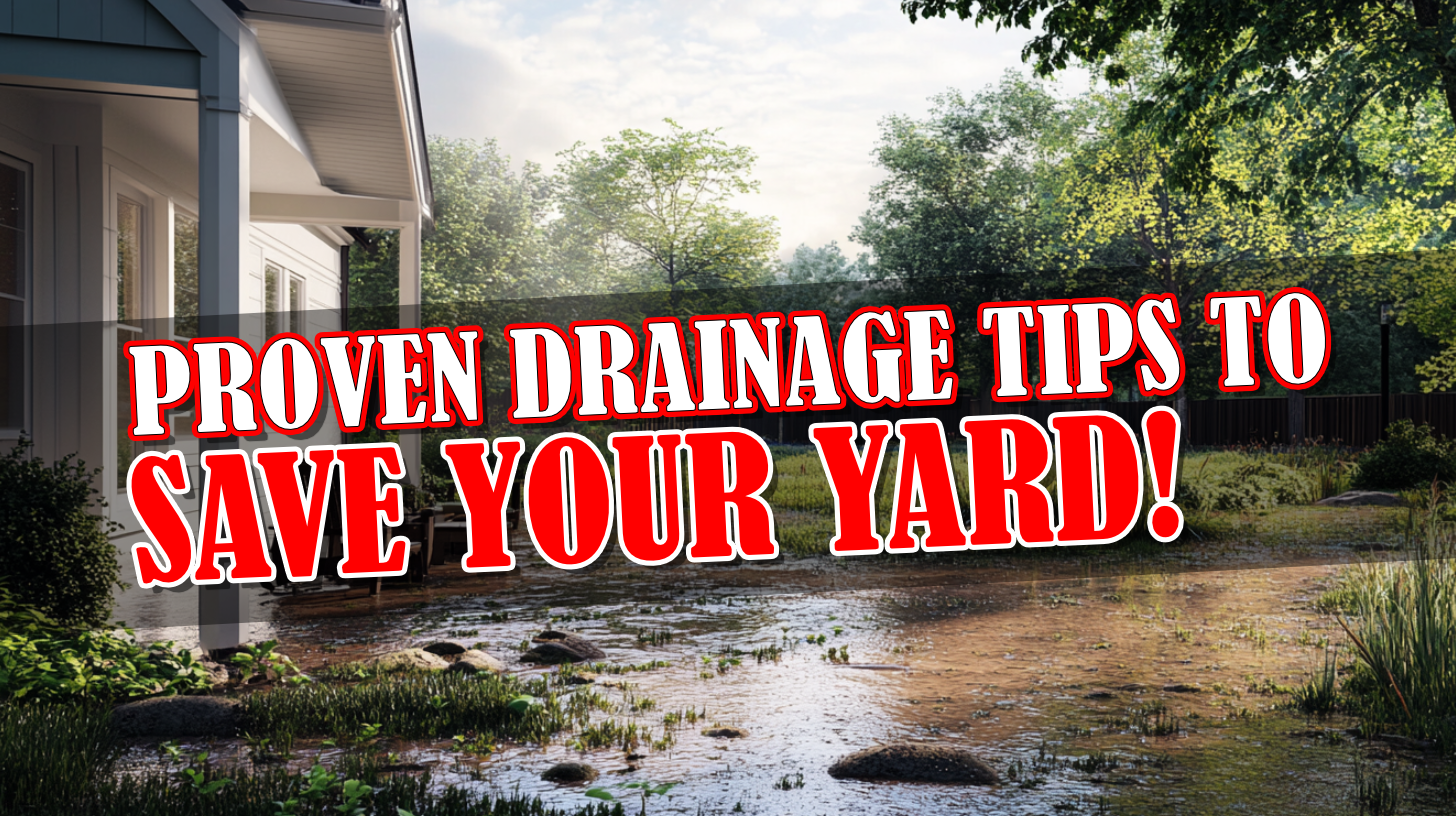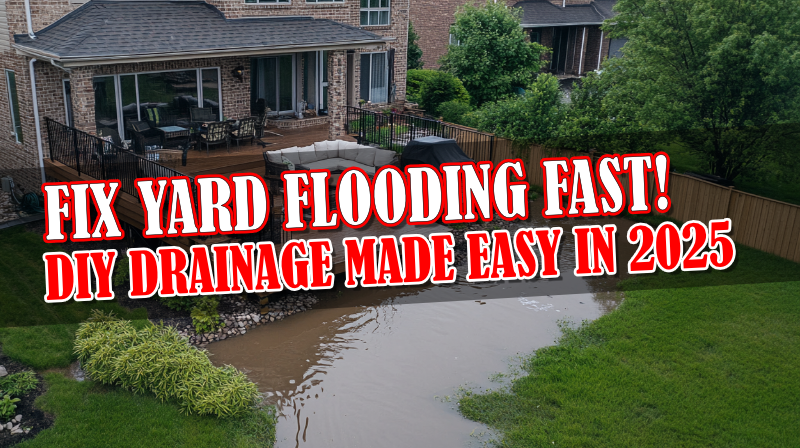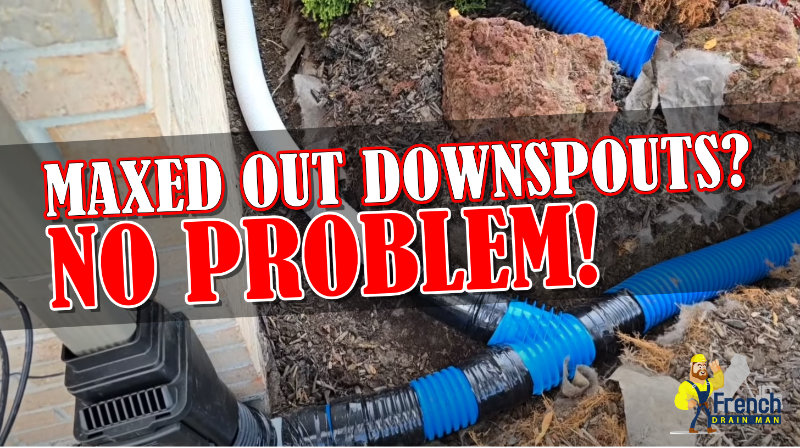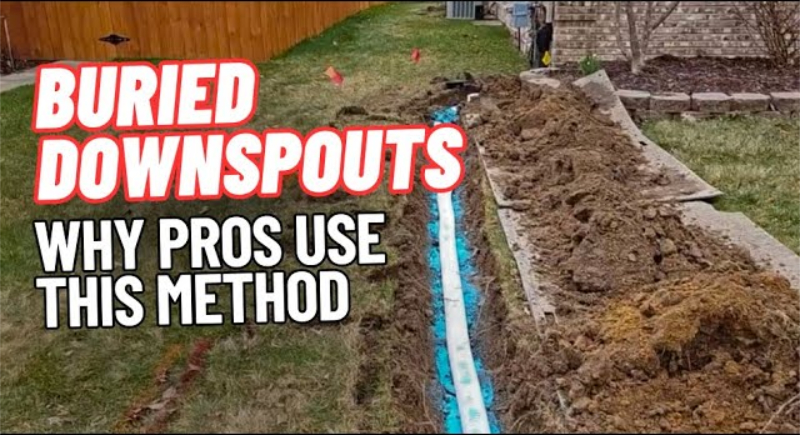Why Slope & Corrugated Pipe Combined Make a Better Yard Drainage System
A lot of diagrams will show a trench with an uneven trench bottom. What I’m seeing with these diagrams that’s very misleading is that they show corrugated pipe following the contour of the bottom of the trench. They are recommending PVC pipe for an uneven trench but the PVC pipe is straight.
Now, PVC pipe is a superior product indoors, where it’s basically fastened to a structure. Whether it’s a house, a building or any structure with a footing, PVC is a superior product and it has a mighty, mighty crush rating. But I’m going to teach you why PVC is not the preferred weapon of choice in yard drains and why I prefer corrugated pipe. I’m also going to help you with these trench bottoms that are not perfectly flat.
Now, my crew gets the trench bottom perfectly flat but in the comments section I get a lot of people saying, “Look, you guys do this every day. There’s no way I’m going to do what your crew can do because they do it every day. They’re professionals, they’re pros, it’s a full-time job, they’ve been doing it for decades.” And I agree with that. So let’s talk about how you as a DIY’er or a young contractor just starting out can beat this uneven trench bottom.
How to Install a Yard Drain with an Uneven Trench Bottom
PVC is straight. So water ends up in the bottom of the trench. It doesn’t magically defy gravity and go up into this PVC pipe.
Now, what do trees love? Trees love water. And can trees sniff out water? You bet they can. That’s how they survive. During the drought season their roots will plug a drain system when you leave water. So you do not want to leave water in the drain. So I’m going to show you a couple advantages here to a tri pack or quad pack.
Here we have high octane corrugated pipe. It’s contoured and very flexible.
Now I have a quad pack. Water flows through this without an issue. When you go to corrugated pipe you also have inlets all the way around – 360 degrees. High octane corrugated pipe has eight slots – giant inlets. Another weakness of PVC pipe is that PVC pipe has holes pointing down. That’s it. That’s all you’ve got with PVC pipe. There’s no holes on the sides and top because it would be very fragile and very brittle and that would probably cause it to break.
Then you have guys laying stone under the PVC pipe. Why are they laying stone around the pipe? Because they know that if the bottom holes in the PVC pipe can’t take in water this system is useless. So what happens is water is left here in the stone, under the pipe. So this tree is sniffing out the water and getting bigger and bigger and it’s happier and happier because of this system. This system works slower and slower each and every year until one year it doesn’t work anymore.
With corrugated pipe we lay it right on the trench. We teach you guys lay it right on the trench bottom. You can only do this if you use fabric. That way there’s not mud and dirt going up inside your pipe. If in fact you end up with the bottom holes plugged guess what? You’ve got eight slots all the way around – 360 degrees. Water’s going to get in that pipe, water’s going to find its way out of your yard. This here is a far superior system over PVC when it comes to your outdoor drainage system. Corrugated pipe will beat PVC any day of the week.
How to Improve Yard Slope
So now let’s improve the system. So, I want a three percent slope. So here’s our high-octane yard drain pipe. Water moves through the giant inlets of high octane, like big, big, giant stone aggregate. The voids that big stone leave causes water to keep moving through the pipe all the way down to wherever you’re discharging.
Now I know right now a lot of homeowners are saying, “Look, I don’t have the slope. I have a flat yard.” I understand that. We run into it all the time. It’s the number one reason why most of the jobs we go to need drainage. That’s why we built our sump system. It’s chambered so it can hold a lot of water. It’s chambered so that the sump pump isn’t turning on and off repeatedly. And the reason why we take it to one of our subsystems is because we’re now going to be able to lift. We get our three percent slope without a problem. Now we just lift the water to the desired height. We’re shipping these things up to seven feet no problem, fully assembled.
I like to see this right at discharge already start going downhill. I prefer that if possible. Sometimes we come out of these, we go up on a fence and run it down. I don’t want to push all this water in this discharge line up hill because it’s just creating resistance. It’s loading the pump. The pump is losing whatever its capacity is. If it’s capacity is let’s say 80 gallons per minute you’re going to kill that pump – and I mean really kill it. I you’re pumping up hill you’re going to have five gallons per minute or something ridiculous. Meaning your yard’s going to flood and then you’re going to have to wait for the pump to catch up once the storm subsides.
Three percent slope with a sump system and see what you got right here. Check it out. The water that’s in here, because this is sloped, the water that’s in here runs and it just keeps running downhill. All right, everybody I hope you found this video helpful. I hope it answered a lot of the questions that have been coming in. And as always until that next video.








